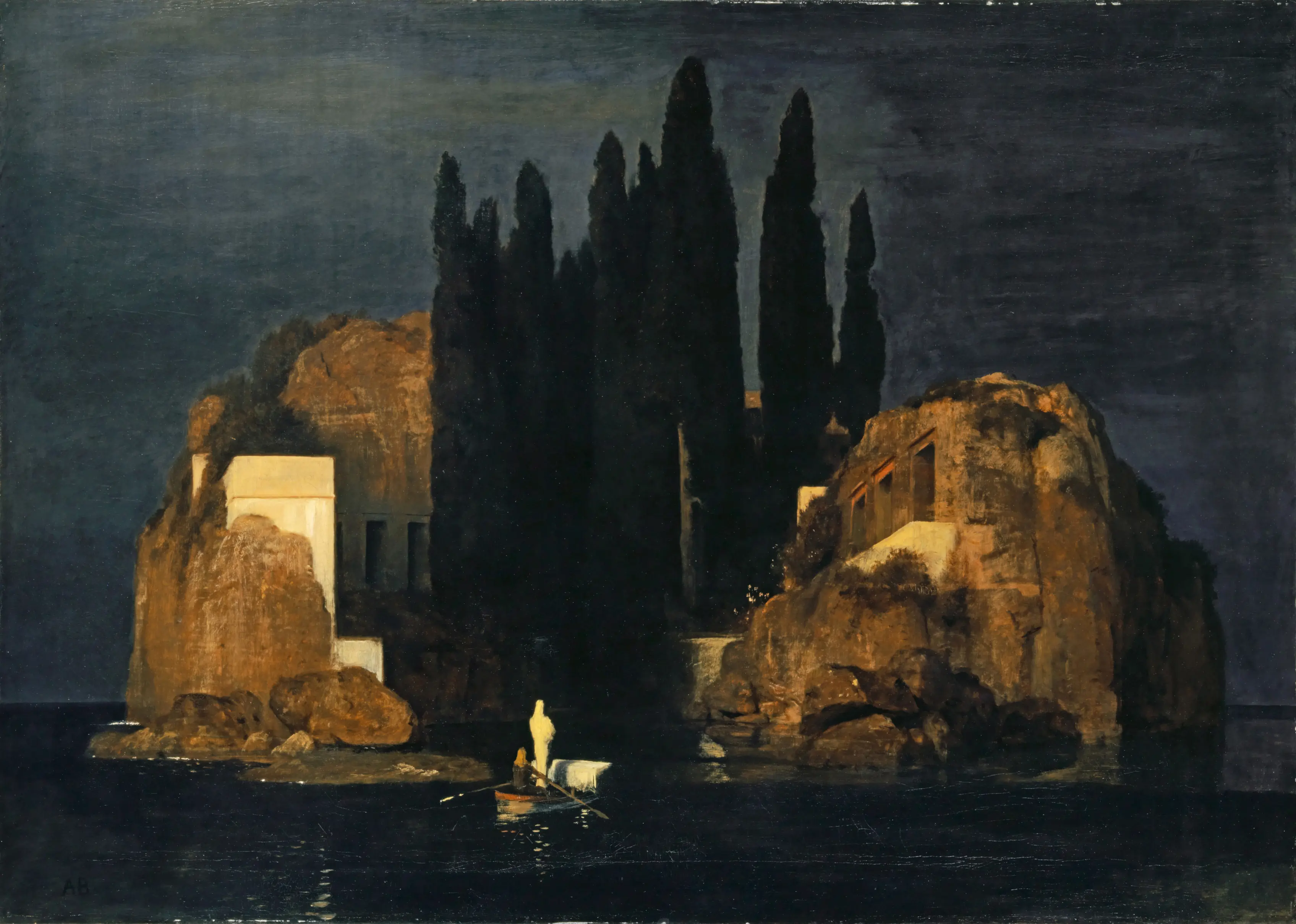
Arnold Böcklin’s symbolist painting “Isle of the Dead” was an important cultural phenomenon in the late 19th and early 20th centuries, being displayed in most German households at the time. It was owned by notable figures such as Adolf Hitler, Sigmund Freud, and Vladimir Lenin. This painting enthralled many with its depiction of the subconscious through a small boat approaching a desolate, rocky islet. Despite this humble scene, this painting carries something captivating and ominous. This is my attempt at revealing the conflicting and mysterious nature of this artwork.
The painting’s lighting is notably inconsistent. The sky and waters are enveloped in a dark, colorless night, while the island and boat are bathed in a soft, golden glow. This contrast brings an imbalance to the scene’s atmosphere. The trees, in particular, are shrouded in darkness while surrounded by the brightly lit rocks. The tree’s lighting also contradicts with the illumination on the rest of the vegetation consisting of bushes and moss. These discrepancies are somewhat forgiven due to the overall balance and natural flow of the composition.
The grove’s existence is improbable because of the sparse soil available on the island, especially considering the trees’ great sizes. They seem almost supernatural without explicitly labeling the entire painting as such. While the Montenegrin island of Saint George near Perast features similar trees on a comparatively-sized island, it has more soil and is surrounded by additional land. This is not the case on the Isle of the Dead.
These trees contribute to the painting’s unique perspective, which is influenced by the rocks, horizon, and man-made structures. The painting has only two vanishing and non-converging points, devoiding its perspective of depth. This lack of depth gives the impression that the viewer is observing the scene from a far away while looking through a telescope. This view’s distance is not noticeable at first glance since the island is occupying most of the frame. One more conflicting nature of this artwork.
On the island, there are structures seemingly carved into the rocks, yet there is no sign of human life. There are no temporary structures like doors or decorations, nor are there any people. The absence of soil and neighboring land further isolates the island, and no explanation is given for the origins of the early settlers.
This isolation leads to another contradiction: why are the two faceless figures boating to this seemingly abandoned and worthless island? The limited land area offers no clear place to dock or walk, and the absence of inhabitants suggests little reason to visit. The difficulty and risk of reaching such a remote location imply a strong reason for their presence, yet none is hinted at. The pair’s purpose and the interiors they might seek veil the scene in further mystery.
The Isle of the Dead’s existence is challenged by its conflicted nature. Such a sight is rare, and demands captivation. When given, it may unveil a glimpse into an unknown world.
